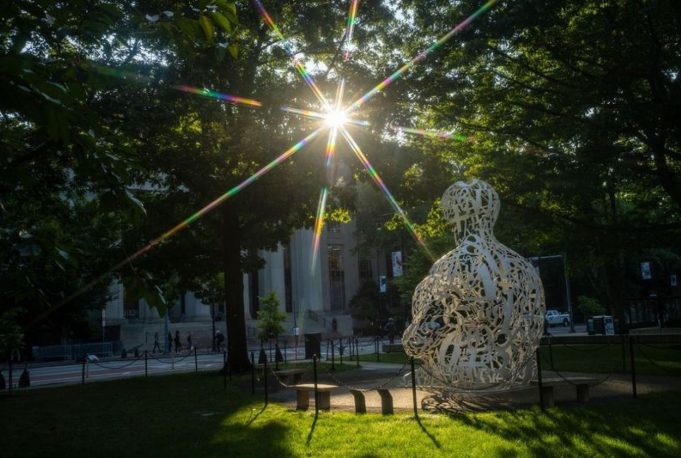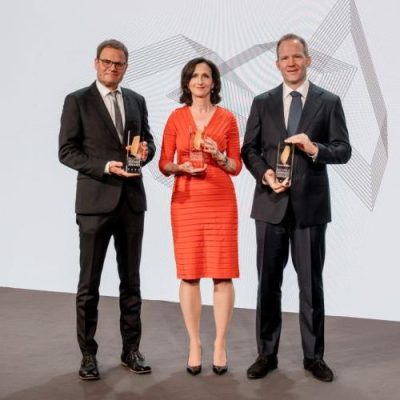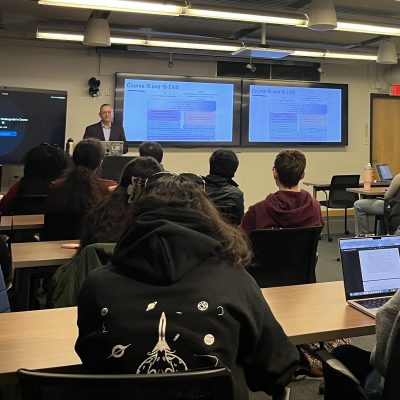
The tenured engineers of 2025
In 2025, MIT granted tenure to 11 faculty members across the School of Engineering. This year’s tenured engineers hold appointments in the departments of Aeronautics and Astronautics, Biological Engineering, Chemical Engineering, Electrical Engineering and Computer Science (EECS) — which reports jointly to the School of Engineering and MIT Schwarzman College of Computing — Materials Science and Engineering, Mechanical Engineering, and Nuclear Science and Engineering.
“It is with great pride that I congratulate the 11 newest tenured faculty members in the School of Engineering. Their dedication to advancing their fields, mentoring future innovators, and contributing to a vibrant academic community is truly inspiring,” says Anantha Chandrakasan, chief innovation and strategy officer, dean of engineering, and the Vannevar Bush Professor of Electrical Engineering and Computer Science who will assume the title of MIT provost July 1. “This milestone is not only a testament to their achievements, but a promise of even greater impact ahead.”
This year’s newly tenured engineering faculty include:
Bryan Bryson, the Phillip and Susan Ragon Career Development Professor in the Department of Biological Engineering, conducts research in infectious diseases and immunoengineering. He is interested in developing new tools to dissect the complex dynamics of bacterial infection at a variety of scales ranging from single cells to infected animals, sitting in both “reference frames” by taking both an immunologist’s and a microbiologist’s perspective.
Connor Coley is the Class of 1957 Career Development Professor and associate professor of chemical engineering, with a shared appointment in EECS. His research group develops new computational methods at the intersection of artificial intelligence and chemistry with relevance to small molecule drug discovery, chemical synthesis, and structure elucidation.
Mohsen Ghaffari is the Steven and Renee Finn Career Development Professor and an associate professor in the EECS. His research explores the theory of distributed and parallel computation. He has done influential work on a range of algorithmic problems, including generic derandomization methods for distributed computing and parallel computing, improved distributed algorithms for graph problems, sublinear algorithms derived via distributed techniques, and algorithmic and impossibility results for massively parallel computation.
Rafael Gomez-Bombarelli, the Paul M. Cook Development Professor and associate professor of materials science and engineering, works at the interface between machine learning and atomistic simulations. He uses computational tools to tackle design of materials in complex combinatorial search spaces, such as organic electronic materials, energy storage polymers and molecules, and heterogeneous (electro)catalysts.
Song Han, an associate professor in EECS, is a pioneer in model compression and TinyML. He has innovated in key areas of pruning quantization, parallelization, KV cache optimization, long-context learning, and multi-modal representation learning to minimize generative AI costs, and he designed the first hardware accelerator (EIE) to exploit weight sparsity.
Kaiming He, the Douglass Ross (1954) Career Development Professor of Software Technology and an associate professor in EECS, is best known for his work on deep residual networks (ResNets). His research focuses on building computer models that can learn representations and develop intelligence from and for the complex world, with the long-term goal of augmenting human intelligence with more capable artificial intelligence.
Phillip Isola, the Class of 1948 Career Development Professor and associate professor in EECS, studies computer vision, machine learning, and AI. His research aims to uncover fundamental principles of intelligence, with a particular focus on how models and representations of the world can be acquired through self-supervised learning, from raw sensory experience alone, and without the use of labeled data.
Mingda Li is the Class of 1947 Career Development Professor and an associate professor in the Department of Nuclear Science and Engineering. His research lies in characterization and computation.
Richard Linares is an associate professor in the Department of Aeronautics and Astronautics. His research focuses on astrodynamics, space systems, and satellite autonomy. Linares develops advanced computational tools and analytical methods to address challenges associated with space traffic management, space debris mitigation, and space weather modeling.
Jonathan Ragan-Kelley, an associate professor in EECS, has designed everything from tools for visual effects in movies to the Halide programming language that’s widely used in industry for photo editing and processing. His research focuses on high-performance computer graphics and accelerated computing, at the intersection of graphics with programming languages, systems, and architecture.
Arvind Satyanarayan is an associate professor in EECS. His research areas cover data visualization, human-computer interaction, and artificial intelligence and machine learning. He leads the MIT Visualization Group, which uses interactive data visualization as a petri dish to study intelligence augmentation — how computation can help amplify human cognition and creativity while respecting our agency.

